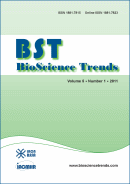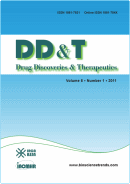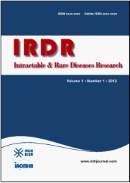Drug Discov Ther. 2025;19(5):351-357. (DOI: 10.5582/ddt.2025.01070)
Tapeworm infection incidence in rural Japan points to a common environmental source of infection
Wannigama DL, Amarasiri M, Phattharapornjaroen P, Hurst C, Suzuki Y, Daisuke Akaneya D, Moriya M, Adachi T, Okuma Y, Ishizawa D, Ishikawa H, Miyanaga K, Cui LZ, Moriya K, Mori H, Ragupathi NKD, Shimotai Y, Sano D, Furukawa T, Sei K, Kanjanabuch T, Higgins PG, Aoyagi T, Kicic A, Trowsdale S, Hongsing P, Khatib A, Shibuya K, Abe S, Hamamoto H
Dibothriocephalus nihonkaiensis is a zoonotic tapeworm transmitted to humans through consumption of raw or undercooked fish or wild meat. Between 2022 and 2023, Yamagata Prefecture reported an increase in cases compared with 2017–2021, when none were observed. We conducted a clinical and environmental investigation to clarify infection sources. Four confirmed and one suspected patient were identified, all presenting with gastrointestinal symptoms. Exposures were linked to raw cherry salmon (Oncorhynchus masou) in three cases and undercooked bear meat in one case. Praziquantel treatment (10–20 mg/kg) was effective, with eight worms (76–210 cm) recovered. Environmental surveillance detected D. nihonkaiensis in 33.3% of bear feces (20/60) and 21.8% of wild fish samples (17/78). Phylogenetic analysis showed close genetic relatedness among human, bear, and fish isolates, indicating a shared transmission cycle. These findings confirm zoonotic transmission of D. nihonkaiensis in Yamagata and highlight the need for food safety awareness and environmental monitoring.







